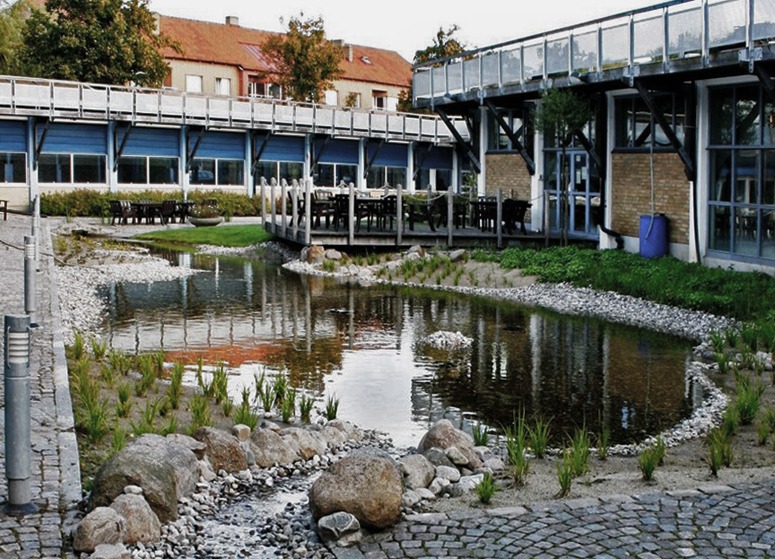This blog has often discussed green roofs and green roof typologies but they always need more consideration:
Green roofs c3500BC
Turf was the standard roofing material in Neolithic North Europe. You can still see this roofing technique in Norway and Iceland
Roof garden c1000BC
The most famous elevated garden in history, the Hanging Gardens of Babylon, may not have been on a roof. Nothing is known about the construction and they may have been ‘hanging’ on an embankment rather then a roof. But they were definitely used as a garden and the only illustration of this type of space is a carved tablet in the British Museum. This was a place for fruits and flowers and a place to walk in the cool of the evening
Roof gardens in the twentieth century
Cities were becoming much denser and much higher-rise, so people began making modern roof gardens. Corbusier proposed one in Paris and the landscape architect, Ralph Hancock, designed one for Derry and Toms, now called the Kensington Roof Garden
Green roofs in the twentieth century
People began to remember that ‘green stuff’ could also serve as a roof-covering material and then found many reasons for reviving the idea: water conservation, biodiversity, acoustics, insulation etc. This led to the making of what are called ‘extensive’ green roofs and, by way of contrast, roof ‘gardens’ came to be called ‘extensive’ green roofs. I think the terminology began in Germany.
Moer Roofs in the twenty-first century
The City of Malmö and the Scandinavian Green Roof institute established a 9000m3 green roof which is called the Augustenborg Botanical Roof Garden. It is a good project and, though the name suggests ‘a botanical garden on a roof’, the design objectives of the Malmö roof are broad: ‘environmental, economical, and to improve storm water management, health and aesthetics in our communities’. This type of roof needs a new name and we could base it on MOER technology: Multi-Objective Environmental Roofing (pronounced as ‘mower’, for irony). The roles of a broad spectrum Moer Roof would include: social use, aesthetic use, food production use (including aquaponics), water conservation, biodiversity, acoustics, insulation, energy generation, sustainability etc. The SGRA has a useful classification of green roof advantages and design objectives
Image courtesy i-sustain


I recently carried out judging for the European Federation of Interior Garden design and out of the twelve or so office blocks and buildings I visited, most had some form of green roof, albiet some were very small sections. A few of these companies also keep bees’s on the roof and use the honey in the staff restaurents. The honey in London so I was told is some of the best in the country with a good variety of plant life on the cities roofs. It felt strange to be level with the dome of St Pauls yet surrounded by plants.
Very glad to hear about the honey. Wouldn’t it be great if the busy bees let the UK become self-sufficient in sweetners by (1) using healthy honey instead of harmful sugar and ultra-harmful High-Fructose Corn Syrup (HFCS) – a compound which pollutes soft drinks and seems destined, one far-off day, for the Poisons Register (2) reducing our sugar intake and our obesity.
See previous blog post Sugar may be the world’s worst poison – so the EU subsidises sugar growers through its Common Agricultural Policy (CAP)
There are many varieties of honey – would this one be called London green roof honey?
[ http://www.benefits-of-honey.com/honey-varieties.html ] It would be interesting to see a description of its taste and the use on the menu as ‘London greenroof honeyed carrots.’
I agree! London Honey could be a world-beater. The words are phonemes and, since a fabulous range of plants is grown in London, the honey is sure to have a rich and distinctive flavour.
There is reason for a new caption in the above post: ‘Green roofs in the 19th century’.
The oldest green roof in the Netherlands dates back to 1894 and still exists. The roof of the warehouses of the Westelijk Handelsterrein in Rotterdam was laid with gras from the outset. It is said that this was done on the initiative of a bishop who lived nearby and resented the thought that an important part of his new view would otherwise consist of a flat and unembellished roof.
The Westelijk Handelsterrein was a design by architect Theodorus Laurens Kanters (1842-1897). In 1917 someone wrote that, depending on the time of year and in addition to being a green roof, showed grazing sheep or workers harvesting the gras and building hay stacks.
Modern inner city roofs could thus both be beneficial to the local climate, and teach dwellers in the surrounding buildings something about the production of honey and wool. Provided there is a sound way to get the sheep up the roof, and down again…
Over the last years, Rotterdam started an initiative to financially support home- and building owners in creating green roofs.
Thank you very much for the historical information. I was very pleased to find this photograph of the Westelijk Handelsterrein . Additional information on the history of green roofs and roof gardens would be most welcome.
Glad I could help, and good job finding that photo.
I see in the text under the photograph that the story about the sheep is called a legend. I can ofcourse not guarantee the story is true, but I can refer to the actual text, an article in a publication of the Rotterdam Archive:
Mees, R., De Muizenpolder, Rotterdamsch Jaarboekje, Tweede reeks, vijfde jaargang, 1917; Rotterdam, page 124.
I have the story about the sheep convincing – and have a small green roof on my own house which, in a wet year, reminds me of the vegetation on a mountain top. The soil is only 50mm deep and in a dry summer the grass is killed by drought.